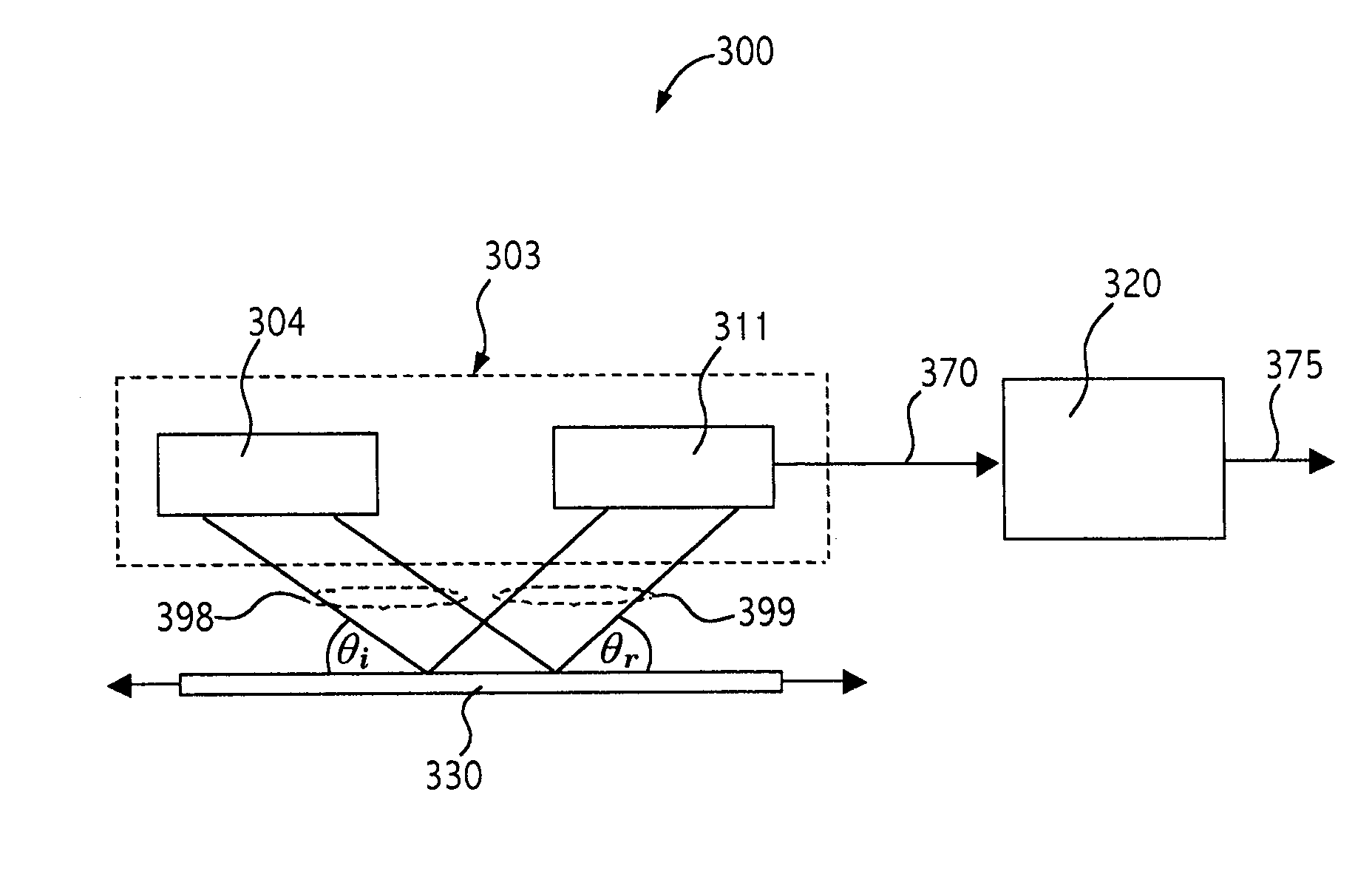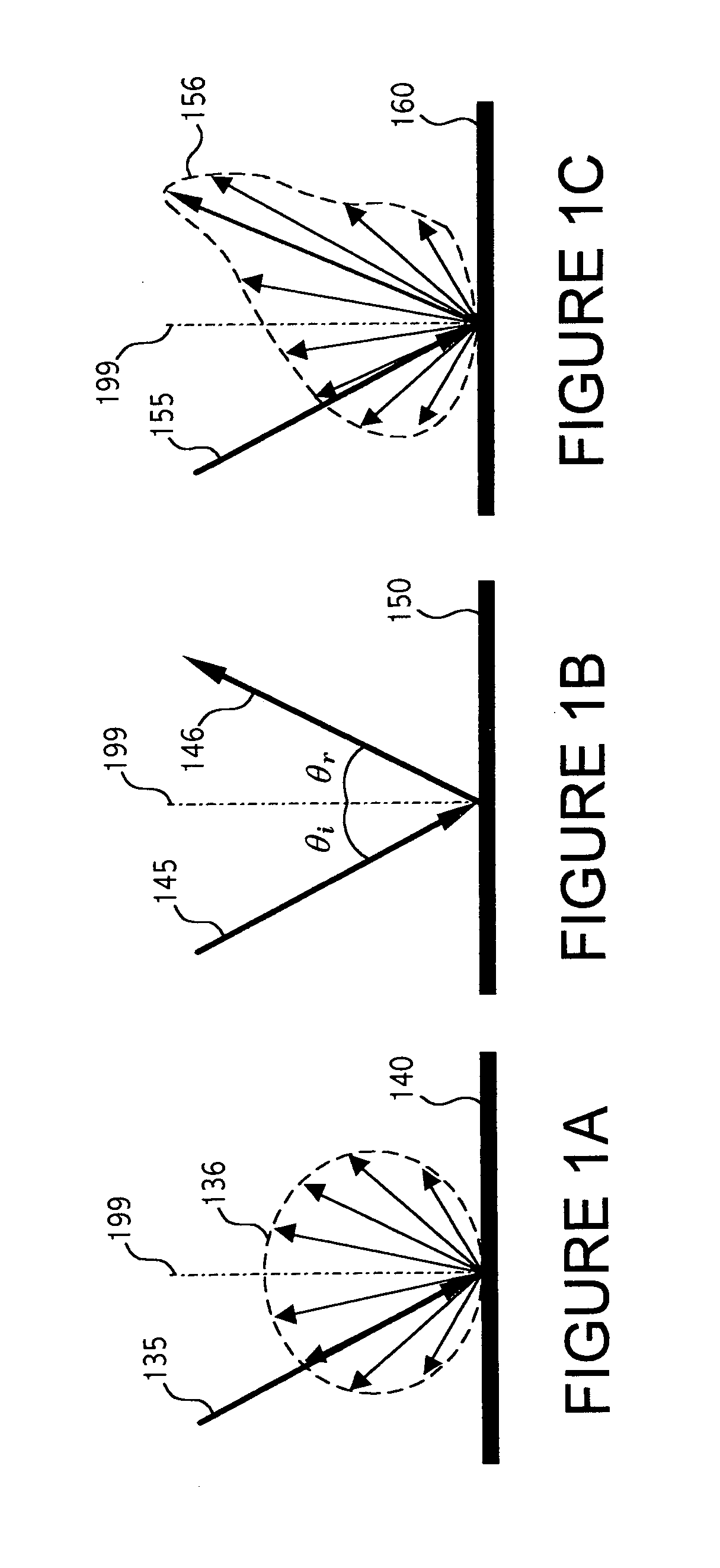Method and device for optical navigation
a technology of optical navigation and optical compass, applied in the direction of measurement devices, instruments, cathode-ray tube indicators, etc., can solve the problems of typical current optical navigation devices that are dominated by painted metal, and achieve the effects of preserving image quality, enhancing image quality, and improving signal
- Summary
- Abstract
- Description
- Claims
- Application Information
AI Technical Summary
Benefits of technology
Problems solved by technology
Method used
Image
Examples
Embodiment Construction
[0022]If a light beam is incident on a smooth surface, the light rays of the incident beam reflect and remain concentrated in a bundle upon leaving the smooth surface. However, if a surface is microscopically rough, then the light rays reflect and scatter in many different directions. The spatial frequency corresponding to the surface roughness may be on the scale of the illumination wavelength. Each individual ray follows the law of reflection. However, in the case of a rough surface each individual ray meets a portion of the surface that has a different orientation. Therefore, the surface normal is different for different incident light rays. Hence, when the individual rays reflect according to the law of reflection, the individual rays scatter in different directions. Furthermore, when either a coherent or a quasi-coherent illumination is applied, high contrast intensity patterns produced by interference among the reflected and the scatter light may be observed in the specular re...
PUM
 Login to View More
Login to View More Abstract
Description
Claims
Application Information
 Login to View More
Login to View More - R&D
- Intellectual Property
- Life Sciences
- Materials
- Tech Scout
- Unparalleled Data Quality
- Higher Quality Content
- 60% Fewer Hallucinations
Browse by: Latest US Patents, China's latest patents, Technical Efficacy Thesaurus, Application Domain, Technology Topic, Popular Technical Reports.
© 2025 PatSnap. All rights reserved.Legal|Privacy policy|Modern Slavery Act Transparency Statement|Sitemap|About US| Contact US: help@patsnap.com



